Text
Pufferfish skeleton part 1
Last summer, I found a dead pufferfish on the New Jersey beach and brought it back to my car (wrapped in two ziploc bags). I'd been interested in vulture culture and bone collecting for a while, but this is the first animal whose skeleton I have hoped to preserve.
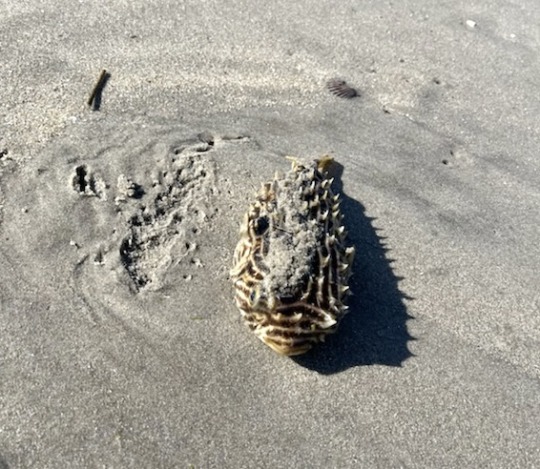
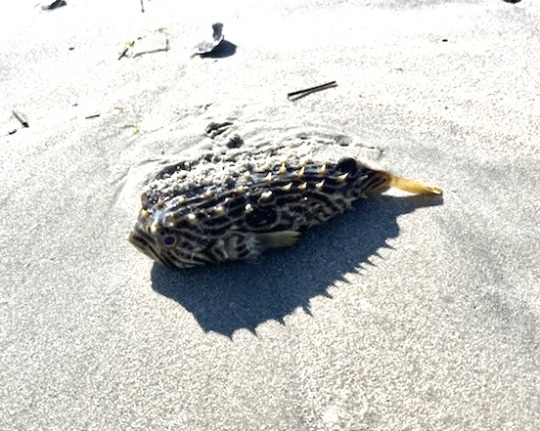
I was able to (imperfectly) determine that it was probably Chilomycterus Schoepfi, aka the striped burrfish. They usually live in reefs and seagrass fields in the Caribbean and Brazil, although they venture as far north as Canada.
Striped burrfish spawn in July in New Jersey, and because I found this on May 29th, I thought it was plausible that he was early to the party, but unfortunately died from natural causes. The body seemed completely unharmed after washing off the sand and examining the underside.
Decomposing:
I used the advice given in this post from @unofficialvulturecultureproblems on how to decompose small animals in pots, because I live in the city and I can't just leave a corpse out to the insects (although I have heard that is a better method in many ways). I also was not mentally strong enough to cut this poor guy open, he just looked too alive :(
I used those nets that onions are sold in to contain the body and so that the bones could be easily collected after decomposition. I buried him in a medium outdoor plant pot, watered him, and basically just left him for a year.
Cleaning:
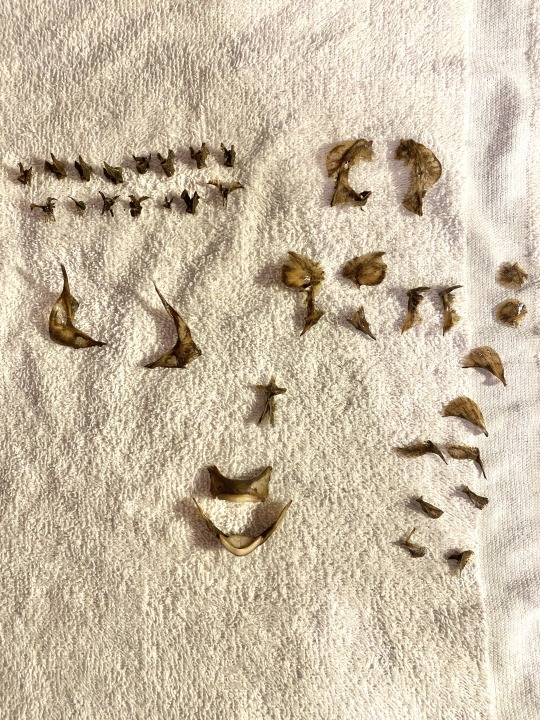
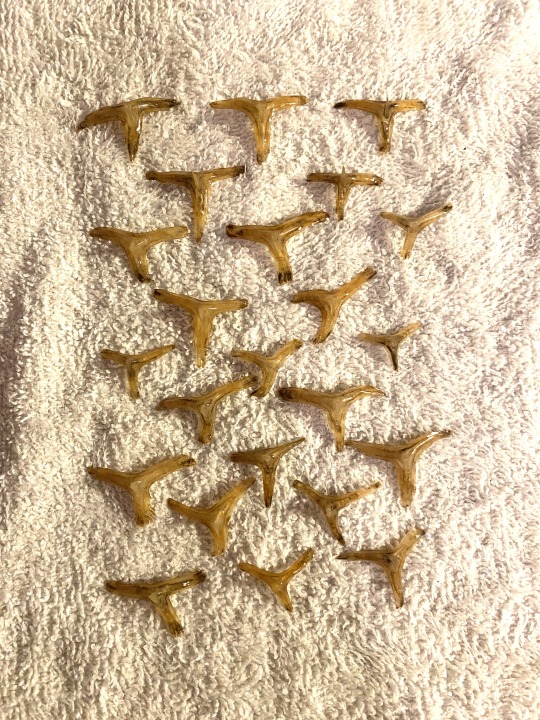
I just uncovered the bones and they are CLEAN. No flesh at all. I think they may have even been left in the soil too long because many bones are delicate and may have been broken down by soil microbes.
I spent ~3 hours cleaning the soil off these individual bones with a toothbrush, although you may be able to see that some soil has been absorbed into the cavities where the bone marrow may have been, making the areas darker.
I left them to soak in water to degrease, but nothing seems to have come out of them after over 24 hours. According to the advice of this post, the next step is to soak in hydrogen peroxide or expose to the sun to bleach.
Neat stuff:


Check out the beak on this guy! Burrfish use their powerful jaws to crush and eat shelled invertebrates like crabs, clams, and mussels.


Here are some close ups on one of the many burr bones that make up the skeleton. They should fit together something like this (although this is a pufferfish, not burrfish skeleton):
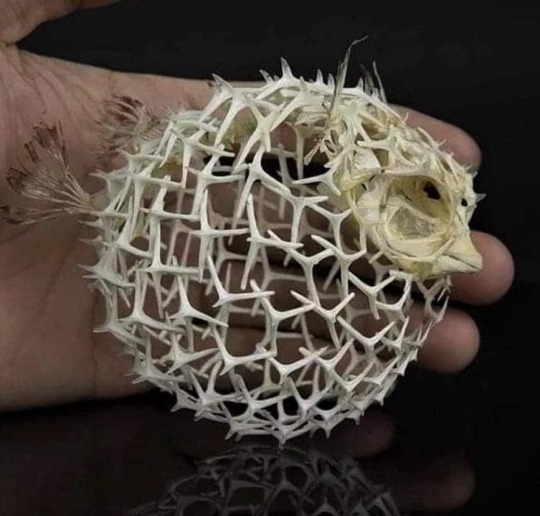
Future plans:
I hope to assemble this skeleton like the example above, although I'm not sure exactly how to go about this. I'm thinking glue at the moment, but I'm not confident I know how all these bones fit together (see the picture earlier of them all set out on a towel).
I would appreciate any ideas for what these bones are or for ideas on a plan of assembly. Also, if anyone has any tips on how to lighten and properly clean some of these bones I would love to hear it! I am excited to join this community!
#vulture culture#skeleton#pufferfish#decay#nature#vulturecore#taxidermy#oddities#gremlincore#bone magick#bone magic#crow hoard#cryptidcore#necromancy#witchcore#dark cottagecore#natural history#feralcore#bones#fish#animal bones#vulture community#vulture blog#vulture aesthetic#death witch#death witchcraft#forestcore#tw death#tw dead animal#tw bones
8 notes
·
View notes